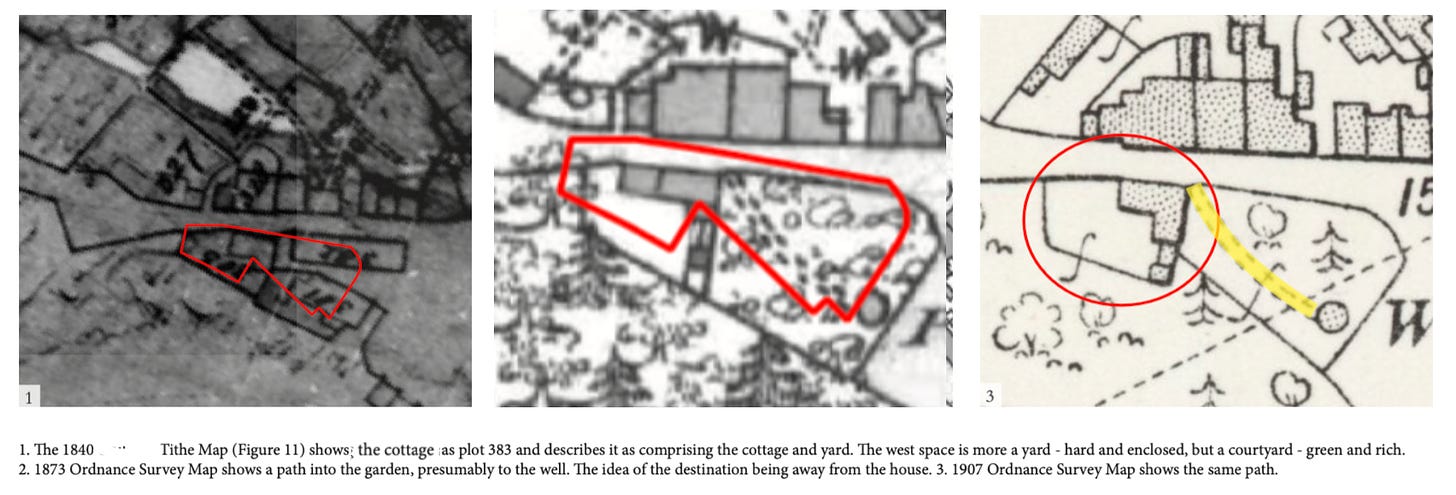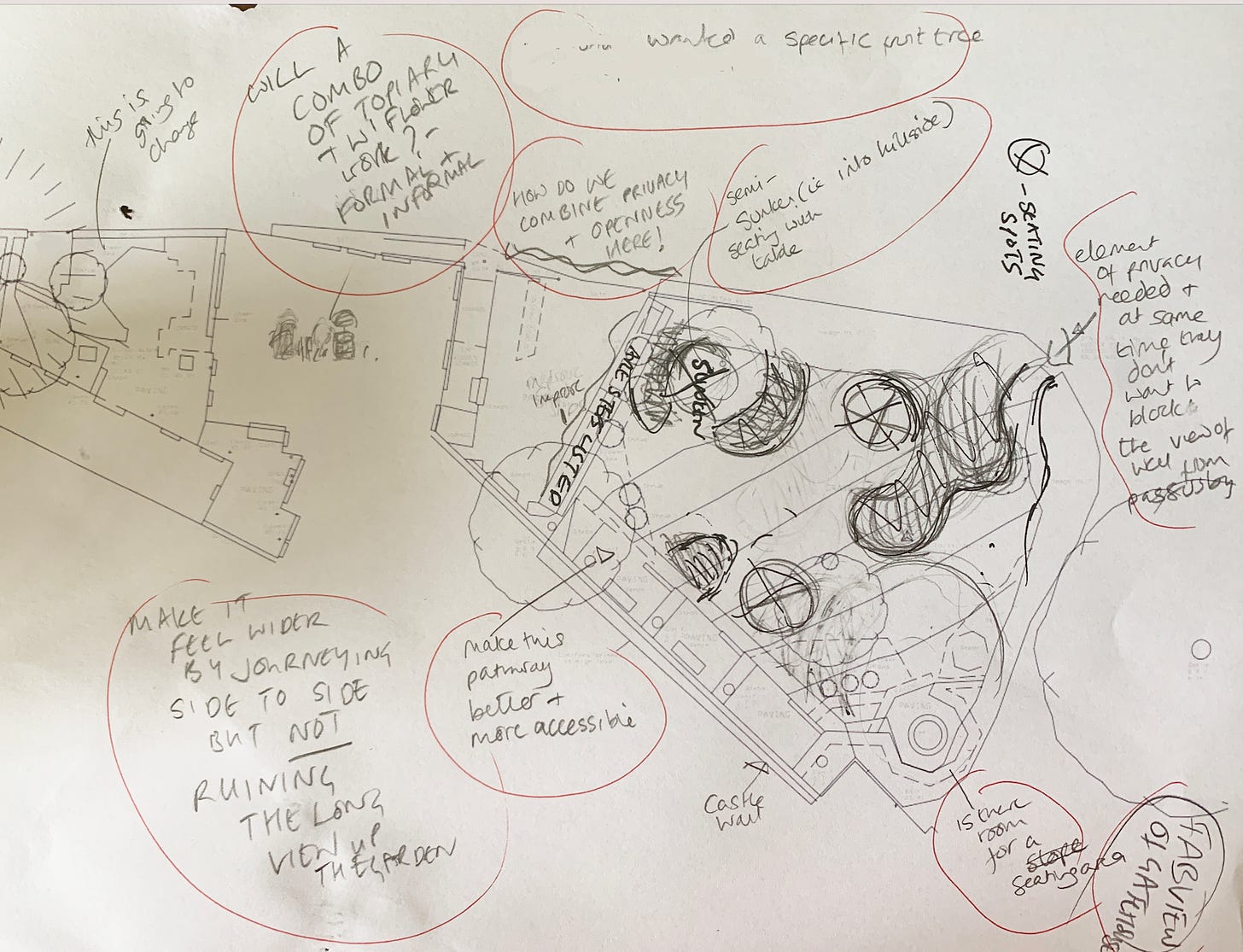How do my ideas for this garden refer to the fairytale that it is within? How can it become a fairytale, borrow a bit of that magic, and, who knows, have glimpses of what it once was?
When I first visit a garden, there are plenty of things I’m looking for.
I’m of course seeking out all those practical things the garden’s custodian wants to include - terrace, shade, planting are all often mentioned as I first step foot into a space.
But before all of that, much more critically, I’m seeking out something beyond those practical items and the potential for them. I’m looking around to get a feel for the garden. An atmosphere. Something that feels right and at one with what surrounds it. In a totally secluded or a more remote garden, I’ll be taking clues from architecture, landscape, and client; in a garden that’s lacking that seclusion, the more obvious clues come from what I can see beyond. And those clues will assist me in creating a garden with atmosphere. A garden with magic. Every garden needs to be magical.
Let me explain

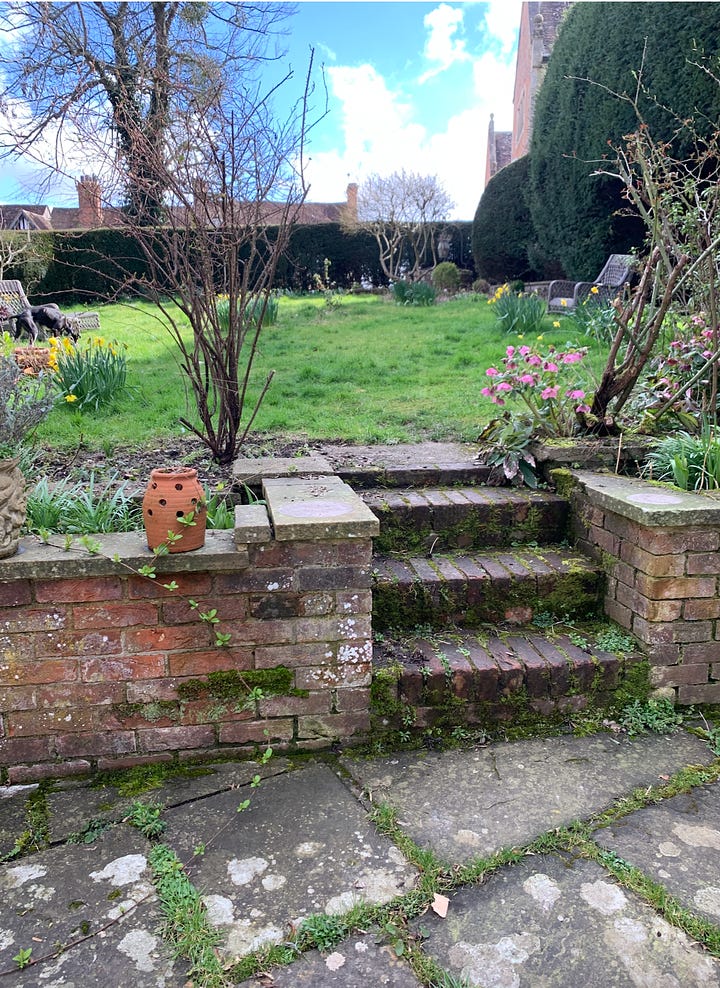
Here’s a spot that’s neither vast nor private
In the middle of the village, everyone can see into it. It consists of a sloping grassed area, evergreen hedging, tumble-down retaining walls and a bit of a terrace down by the house. As I’m looking around, the loveliest of clients are chatting to me about their wishlist: a terrace, a secluded dining area, acknowledge the existing well, openness and privacy, fruit trees and flowers, make use of the whole garden. They’re not asking a lot: they simply want this garden to be a usable space - yes, the openness/privacy debate might be something to contemplate, but I’m totally on board with that, as blocking off this spot would have an impact both on neighbours and on the light levels and the feel within the garden itself.
And there we are. That ‘feel’. The atmosphere. And that’s what I’m talking about - finding the magic of the space. Working out what it is that makes it tick, scooping up that ‘what’, and pouring it into the garden. I’ll say it again: every garden needs to be magical.
So how to go about that? Well, in this particular spot, the designer is in a sense both spoilt and burdened at the same time by the sheer magic of the surroundings. The house is a proper fairytale cottage, situated in the heart of a fairytale village, sharing a garden wall with a fairytale castle. Everything couldn’t be more magical if it tried, and so in theory it would be hard to go wrong. Redo the terrace adjoining the house, mend the wall, stick in a few roses, and there, all would be done. All will be pretty.
Well yes, kind of. But that wouldn’t be getting to the heart of the garden, which is what I absolutely need to do.
I need to get under its skin, find out what the place is. I’ll note down words that I hear: as you’ll already know if you’ve taken part in the design conversations here, it’s important to get these notes down, as they start to demonstrate how the garden will work, and as this happens, the garden starts to shape itself. And as I’m looking at how the garden is starting to take shape, I’m constantly looking back at these ideas and how they refer to everything else.
How do my ideas for this garden refer to the fairytale that it is within? How can it become a fairytale, borrow a bit of that magic, and, who knows, have glimpses of what it once was?
Let’s take a look back in time:
These maps - not anywhere as old as the house but still old enough to show me some clues as to how the space was used - give me a clue. It’s fairly obvious that a well would have been the source of water for the house. It looks to me like in 1840 the well was accessible to the village; by 1873, it had been incorporated into a grassed area with a path from cottage to well (maybe still publicly accessible); by the beginning of the 20th century, another castle wall had gone up into the garden and separated the cottage off.
So that well is important. It needs a route to it. I kind of knew that anyway, but history gives me licence to explore this further. But how do I avoid that wishing well look, that token of a well complete with bucket and arch? It cannot become a focal point. But if that’s the case, how do I nestle this feature in to the garden?
Let’s get those notes down.
I need:
a journey
privacy
openness
dining area in sun
shade
make the well a destination but not too obvious
the well is key to the village
views of surrounding architecture
informality of cottage, formaility of castle walls
the cottage is Tudor - reflect that
the cottage is in the 21st century - reflect that
Time for a bit more of a poke around:
A closer investigation of that tall wall which bounds the garden along one side reveals that there are actually the remnants of a path here, although the overgrown yew trees would have you think otherwise:
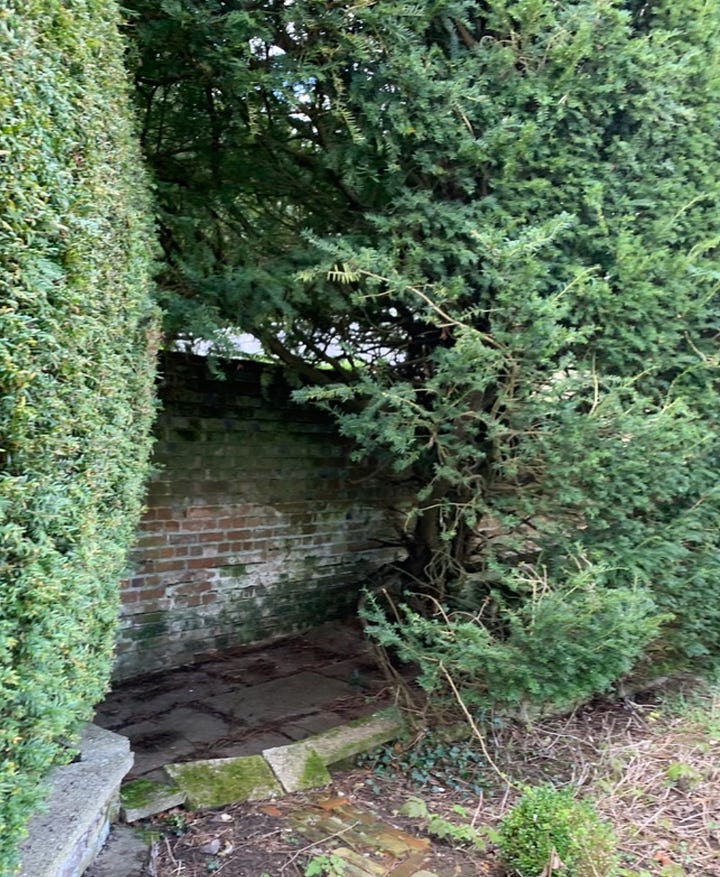
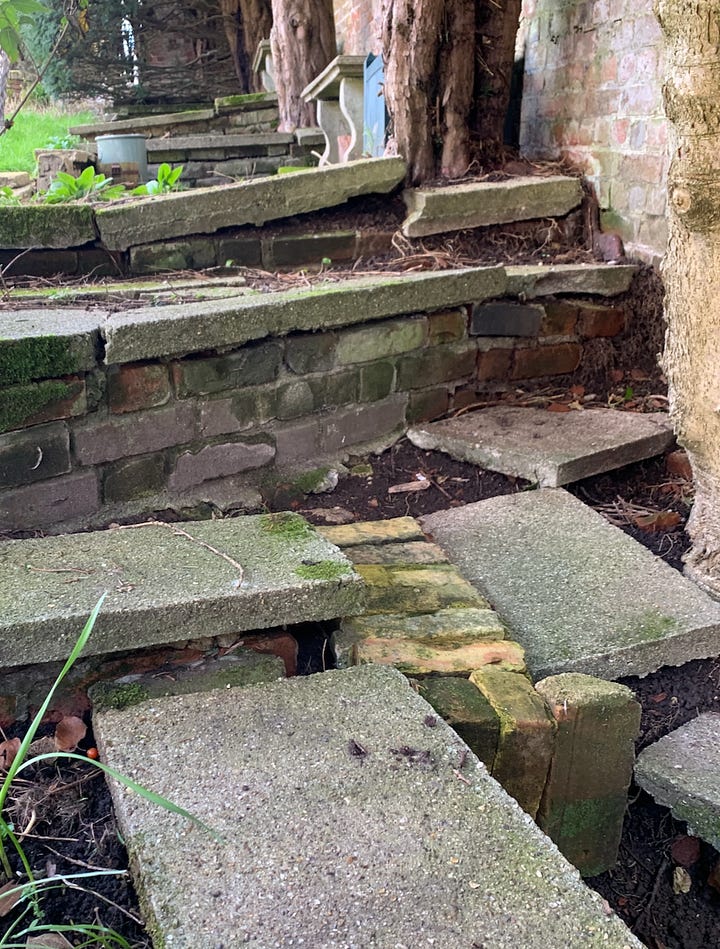
and I see no reason why this route shouldn’t be reinstated. It’ll need liberating, but taxus is a forgiving tree when you cut it back, and a good straight path could also provide shady places to sit. This route will take you to the well, certainly, but at this moment it still feels a bit ‘to one side’ for me. How will it work with all those items on the wishlist?
This is the moment when I start scribbling:
A terrace for sun-lovers needs a sunny, secluded spot. I’ll sink that somehow, and then base everything off that location.
Do you see what’s happened? Things start to locate themselves, out of functionality - a dining area needs to be near-ish the house, but the well at the other end of the garden could be a fun little seating area - and I can now start to think about a layout, as well as how to make sense of everything. How does a well appear in a garden without it looking like something you should throw a penny into and make a wish?






